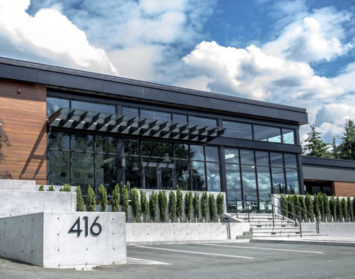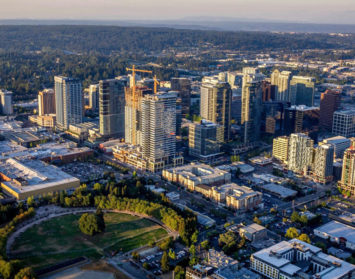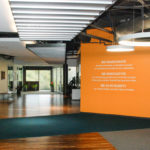By Gavin Curtis & Austin Lashley
In recent years, hundreds of articles have speculated about which city or town will be the “next Silicon Valley.” One commonly mentioned frontrunner is the City of Seattle. Renowned by experts as the Cloud Technology Capital of the world, Seattle has become the largest expansion market for Bay Area companies. According to data from GeekWire, over the past 5 years, Bay Area tech companies have leased approximately 3.5 million square feet of office space in the Seattle market.
One submarket within the Greater Seattle Area that has become a hotspot for Bay Area tech firm expansion is the Eastside, which is comprised of Bellevue, Kirkland and Redmond. High-growth technology companies are no stranger to the Eastside. Starting with Microsoft in the 1980’s, the area has become a mecca for internet-based tech. In the last year alone, Oculus leased over 800,000 square feet along Willows Road in Redmond, Google leased 400,000 square feet in Downtown Bellevue, Facebook is rumored to be considering Spring Districts’ upcoming 316,000 square foot Block 16 building, and Amazon recently leased Expedia’s 400,000 square foot tower in Bellevue’s Central Business District. We expect these companies to continue their Eastside growth over the next few years. Alongside these well-known tech giants, upwards of 20 other Silicon Valley-based technology firms have established Eastside offices.
The Benefits
Often considered Silicon Valley’s little brother of sorts, the submarket offers something unique and sets itself apart from Silicon Valley in many ways. Innovative technology companies choose to invest in the Eastside market due to the unique business layout alongside a highly educated and diverse workforce.
Lower Cost of Living
One of the most appealing aspects of the Eastside is a comparatively lower cost of living than that of the Bay Area. According to Bankrate, the average cost of living in San Francisco is nearly 26% higher than Seattle. On top of this, housing prices on the Eastside are significantly less expensive. According to Zillow, the median home price in Seattle is around $414,000 versus $834,000 in the Bay Area. The cost of living in San Francisco has become so high that business social networking platform, Blind, recently estimated that nearly 59% of employees at tech companies can’t afford adequate housing. Many employees in Seattle can live more comfortably while maintaining an equivalent salary.
Commercial Real Estate Costs
The Eastside also has a diverse offering of office product available at a fraction of the price seen in Silicon Valley. Bellevue’s Central Business District boasts high-end skyscrapers, Kirkland has waterfront mid-rise buildings and Redmond offers a traditional suburban campus environment. In San Francisco, Class A high-rises typically run around mid-$70s per square foot per year, in comparison to approximately $50 per square foot per year in Bellevue. The potential cost savings on office space in Seattle are significant and, as a result, more companies are choosing to expand into the Seattle market.
Highly Educated and Diverse Workforce
In recent years, the fast growth of tech companies in Silicon Valley has outpaced the number of available software engineers, inflating labor costs and pushing companies to look beyond San Francisco. Seattle offers one of the country’s most highly educated workforces that can rival the Bay Area’s talent pool. Stanford has long fueled the tech startups in Silicon Valley, however University of Washington’s top-rated computer science program has become one of the schools’ most popular majors, producing a strong workforce of educated engineers and programmers. Seattle’s pool of tech labor has grown to 8.8% of the total labor force, far exceeding the national average of 3.5%.
Another advantage of Seattle’s workforce is the diversity. This summer, University of Washington was ranked the 3rd most affordable college in the nation. The stellar education paired with lower barriers to entry than other highly regarded four-year universities has helped grow a diverse talent pool in the greater Seattle area that technology companies can recruit from.
Overall, the Eastside is a strong alternative to Silicon Valley for technology companies. The Eastside’s unique history, economic landscape and labor composition are the main factors that differentiate the region and fuel continued growth, and we can’t wait to see what the future holds for the region!
Austin Lashley is a senior vice president of Hughes Marino, a global corporate real estate advisory firm that exclusively represents tenants and buyers. Contact Austin at 1-844-662-6635 or austin@hughesmarino.com to learn more.
Gavin Curtis is an executive vice president at Hughes Marino, a global corporate real estate advisory firm that exclusively represents tenants and buyers. Contact Gavin at 1-844-662-6635 or gavin@hughesmarino.com to learn more.











